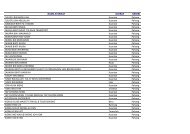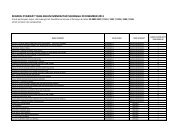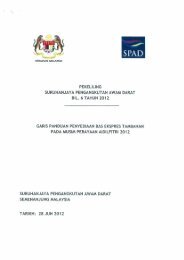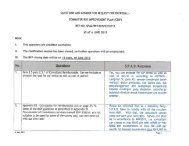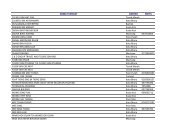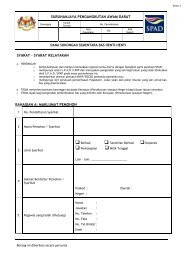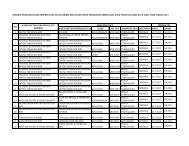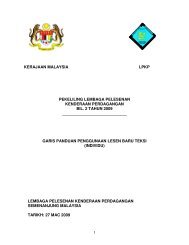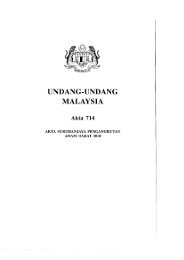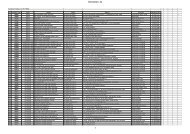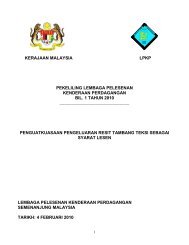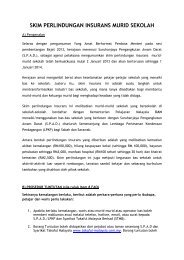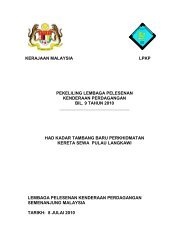Executive Summary - SPAD
Executive Summary - SPAD
Executive Summary - SPAD
Create successful ePaper yourself
Turn your PDF publications into a flip-book with our unique Google optimized e-Paper software.
Typically the more accessible areas by LPT reflect the rail corridors within Kuala Lumpur. Within<br />
the central area of KL there is a strong focus on the LRT corridors. The map does show that areas<br />
to the north and west of the region generally have less accessibility than to the south.<br />
Therefore for LPT; only those employers close to a rail or LRT line have good access to the<br />
workforce and similarly those residents living close to such lines have greater access to<br />
employment by LPT.<br />
Integration<br />
A number of stations are poorly integrated with other modes.<br />
The travel cards introduced by RapidKL are increasing the ticket integration between bus and LRTthis<br />
system will be extended to KTM as part of the NKRA.<br />
2.1.2) Stakeholder Engagement<br />
As part of the ongoing study stakeholder engagement with key agencies was used to inform the<br />
development of the PTMP. The initial engagement included federal agencies, Dewan Bandaraya Kuala<br />
Lumpur (DBKL), Selangor State Unit Perancang Ekonomi Negeri (UPEN), Perbadanan Putrajaya, other<br />
district local authorities, and transport operators. From this process <strong>SPAD</strong>:<br />
<br />
<br />
<br />
Identified key concerns and issues<br />
Identified stakeholder‟s plans and proposals for the future<br />
Collated a range of data (land use information, rail patronage, bus network data, traffic counts and<br />
journey time data<br />
The key view points on LPT from stakeholders on each mode are set<br />
out below. For rail, the main industry concerns highlighted issues in<br />
relation to the capacity and quality of the existing system,<br />
integration between modes particularly the feeder services and gaps<br />
in network coverage. From the bus industry the concerns covered<br />
issues related to competition between the different types of<br />
operator. Alongside issues of congestion the main bus industry<br />
concern was the profitability of operations. From the taxi industry<br />
the concerns were less on the profitability of the industry and more<br />
related to standards of service including congestion, road<br />
maintenance, driver training and vehicle types.<br />
Therefore in assessing the timing of improvements there is a view that there are a number of problems to<br />
be resolved now in terms of the quality of the LPT system in the region.<br />
Page 10



